The Asian Koel is a common bird which belongs to Cuckoo family. The scientific name of this bird is Eudynamys Scolopaceus. This species are found in Indian Subcontinent, China and Southeast Asia. The Koel has different geographic forms based on the shape of their plumage and known with different scientific names in the above mentioned regions.
According to wikipedia, the Asian Koel is a large size bird with long-tailed measuring around 36-46 cm (15-18 in). The female koel appears brownish on the crown and has rufous streaks on the head. The other parts of the body are dark brown with white and buff spots.The male koel is glossy bluish-black with a pale greenish grey beak. The iris is crimson and it has grey legs.[1]
It is known that the Asian Koel is a brood parasite. It means they rely on others to raise their young ones. The brood parasite manipulates a host, either of the same or of another species to raise its young as if it were its own. It has been observed the Asian Koel often lays more than one egg in a host’s egg, usually two to three in House Crow or Long tailed Shrikes are likely to accept them.[2] [3]
The bird is totally carpophagous, usually feeds on fruits and occasionally add insects to its diet. This species are famous for their loud vocalisations during the breeding season which begins from March and continues till September. They are shy and secretive type of bird but produce distinguishable loud calls which are easily detectable.The ko-oooo, koo-oooo call of the male Asian koel is the common one which we normally hear in our surrounding areas.[4]
I have spotted Asian Koel in various places in Mumbai, Thane and Konkan region. It includes Mumbai University, Mazagaon Hill, Byculla, Worli, Dadar, Sewri, Powai, Kalyan and some areas of South Konkan. The bird can be easily spotted in other greener areas of Mumbai city such as Mahim Park, SGNP, Aarey Colony and Yeoor Hills. The bird is so common that you could spot in your local gardens which have Mango, Fig and Banyan trees.
The India Biodiversity Portal shows the occurence/spotted records of Asian Koel across various states in India through a Google Map. It is interesting to see the visual depiction of this bird in form of small spots across India.
Here are some photos of Asian Koel (Female & Male) captured by me.
References:
1. Wikipedia – Asian Koel
2. Brood parasitic cuckoos and their hosts in Jahangirnagar University campus
3. Brood parasite
4. Vocalizations of adult male Asian koels (Eudynamys scolopacea) in the breeding season
5. India Biodiversity Portal – Asian Koel
Read more on Indian birds
1. Birds of India – Part 1
2. Birds of India – Part 2
3. Birds of India – Part 3
4. Indian Golden Oriole
5. Black-rumped Flameback Woodpecker
6. Common tailorbird
7. Green bee-eaters
8. Seagulls
9. Red-vented bulbul
10. Baya Weaver
11. Coppersmith Barbet the official Bird of Mumbai
12. Oriental Magpie Robin
13. Plum and Grey Headed Parakeets




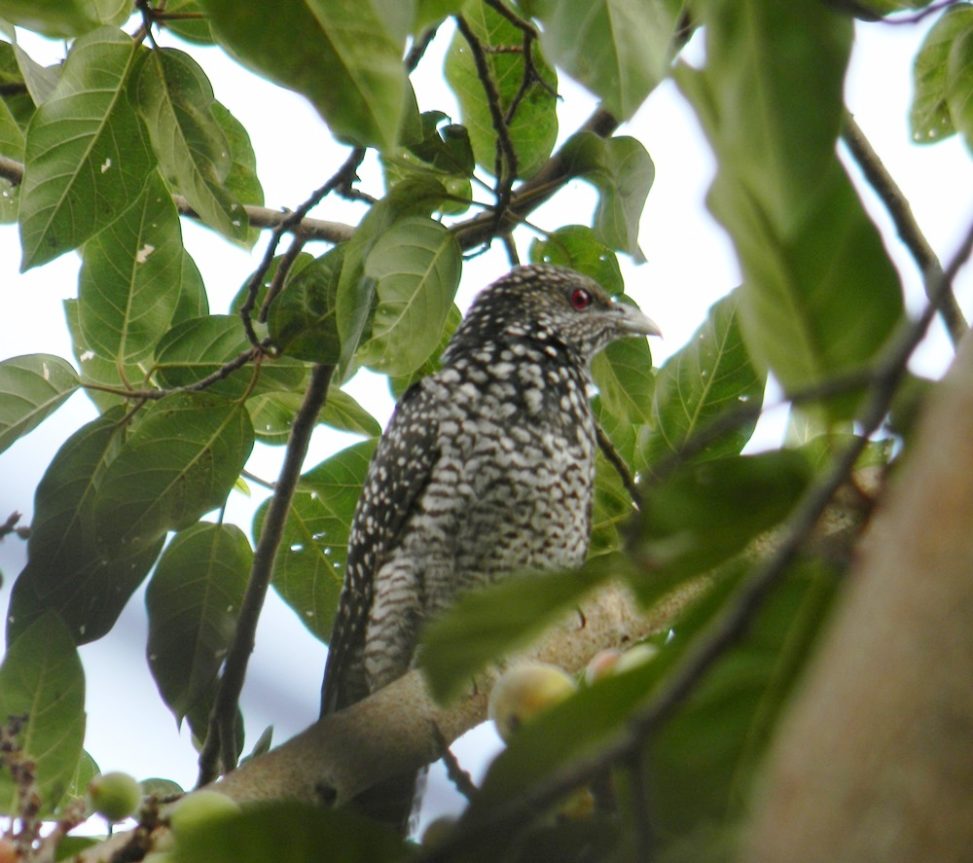

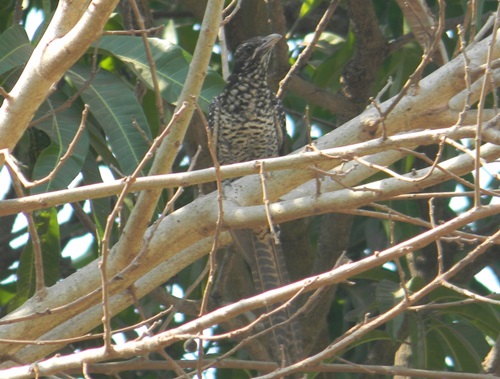
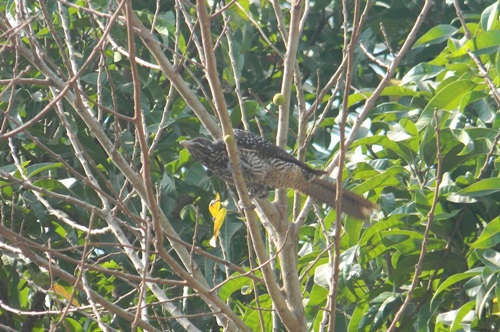
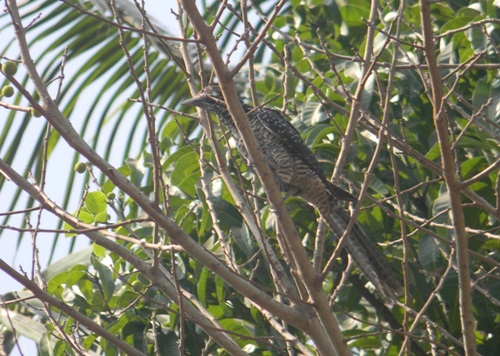
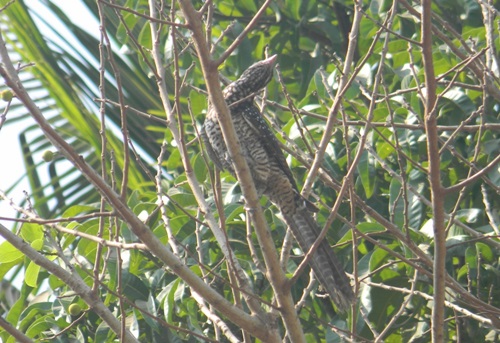
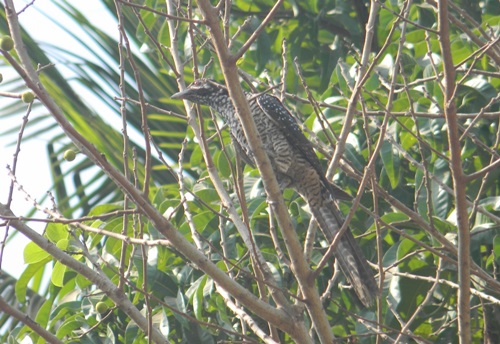
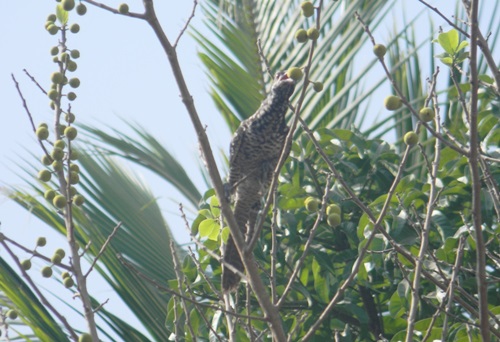
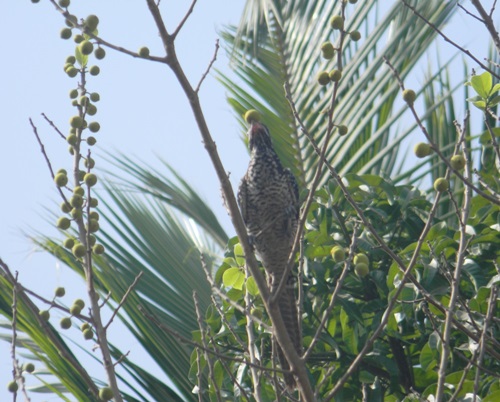
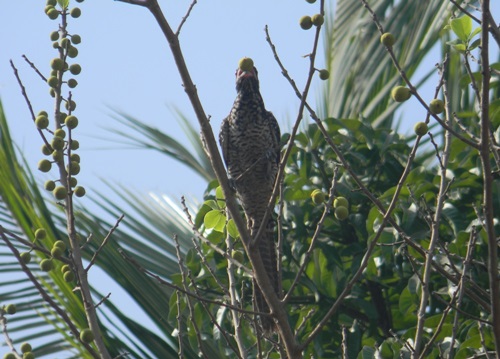
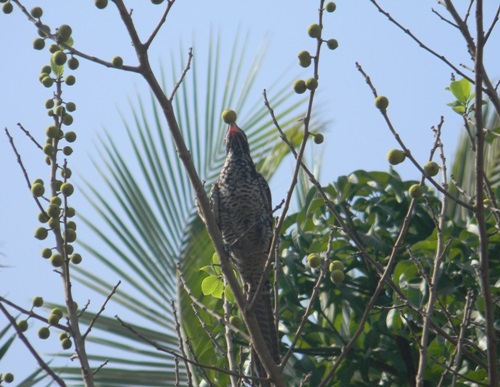
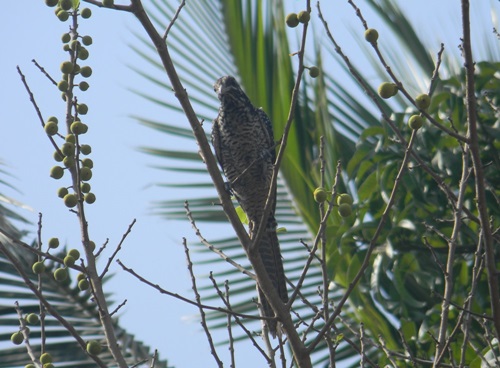
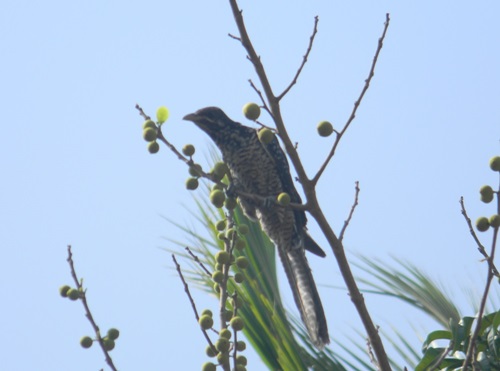
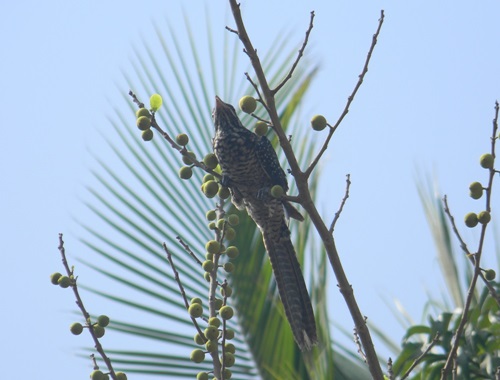
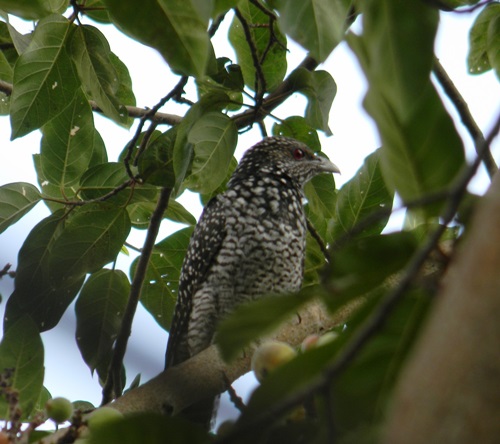
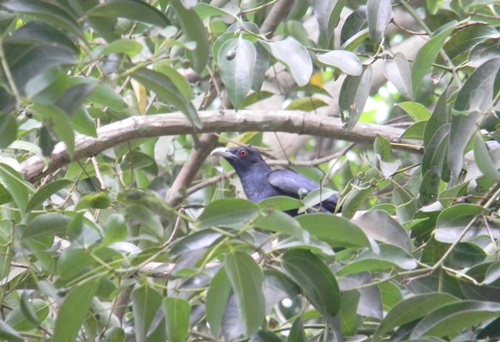
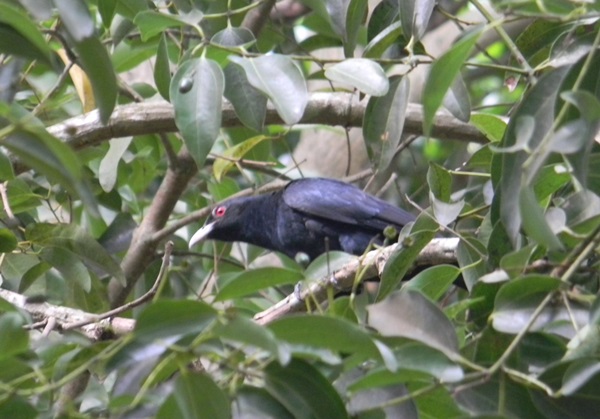
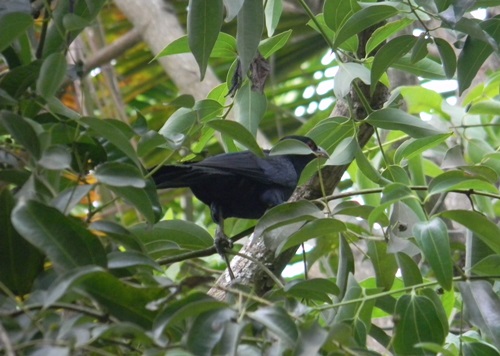
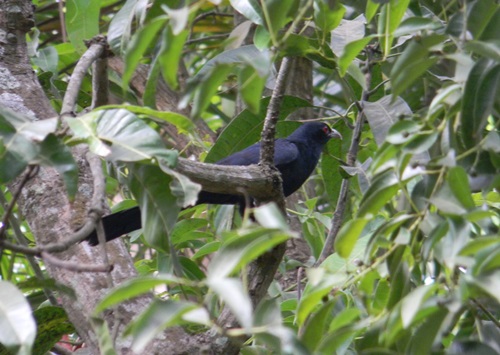
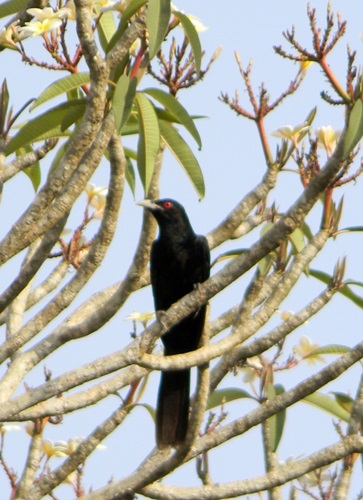
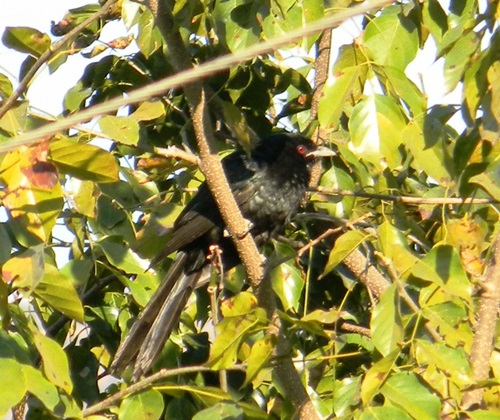
Jyoti
एशियन कोयल के बारे में बहुत ही रोचक जानकारी दी हैं आपने।
Sachin Baikar
बहुत धन्यवाद ☺ ज्योति जी|
Dipali Bhasin
Love the pictures! It was interesting to read how the brood parasites get to raise their young ones. Short and informative post!
Sachin Baikar
Welcome to My Photo Blog ☺ Dipali.
Thanks for your appreciation ☺
Jyotirmoy Sarkar
Very informative post about Asian Koel, captures are nice ,specially loved the ones holding the fruits.
Sachin Baikar
I’m glad you liked the post and pics ☺ Jyotirmoy. Thanks for your appreciation ☺
Neeraj Kumar
Just thinking how much of hardwork you put in your every blogpost? It is amazing.
Felt nice after this post as it brought me a bit closer to nature .
Sachin Baikar
For birds specific information, I just write based on the information gathered from various authentic sources after the initial research and add my experience with photos to make it a complete post. I do mention the references at the bottom of the post.
It is nice to know that you felt closure to nature after reading this post. Thanks for your appreciation ☺ Neeraj.
Neeraj Kumar
There is also one more interesting message I saw in the post that I would like to mention about. How interesting it is to note that the bird can trust other same species (birds) for wellbeing of its offsprings…. but same can’t be said about we homo sapians ?
Sachin Baikar
Sharing the following article for your reference. It is interesting one.
Cuckoos and crows teach us how parasites can be good
https://www.treehugger.com/natural-sciences/cuckoos-and-crows-teach-us-how-parasites-can-be-good.html
Neeraj Kumar
Interesting read. Thanx for sharing.
Harsh Wardhan Jog
Good snaps. Koel must be the cleverest of all birds I guess.
Sachin Baikar
Welcome to My Photo Blog ☺ Harsh.
Koel is definitely smarter than Crow 👍 Thanks for stopping by and sharing your comments ☺
Tomichan Matheikal
You got the bird in all the possible postures. Wonderful.
Sachin Baikar
Thanks Tomichan 🙂 Yes, you are right. I tried to capture all possible postures.
Anagha Yatin
Koel and mangoes have a strong relationship. I remember one Hindi poem by Subhadra Kumari Chuhan, in which the poetess says that mangoes get their sweetness from the ‘kooing’ of the Koel!
I loved the pics of Koel. Felt as if Mrs Koel gave a poses for the shoot! Mr Koel has very fiery and attractive eyes. I never knew that.
Thanks for sharing Sachin.
Sachin Baikar
Thanks for informing about the interesting relationship of Koel and Mangoes. I really enjoyed clicking different poses of Mrs. Koel 🙂
Rupali
Awe lovely shots.
Sachin Baikar
Thanks Rupali 🙂
rupam { xhobdo }
Beautiful photos.
Sachin Baikar
Thanks Rupam 🙂
Mridula
Beautiful captures. I still get to hear them in summer and they used to be so common around my childhood home!
Sachin Baikar
Thanks Mridula 🙂
magiceye
Lovely captures and very informative too!
Sachin Baikar
Thanks Deepak 🙂